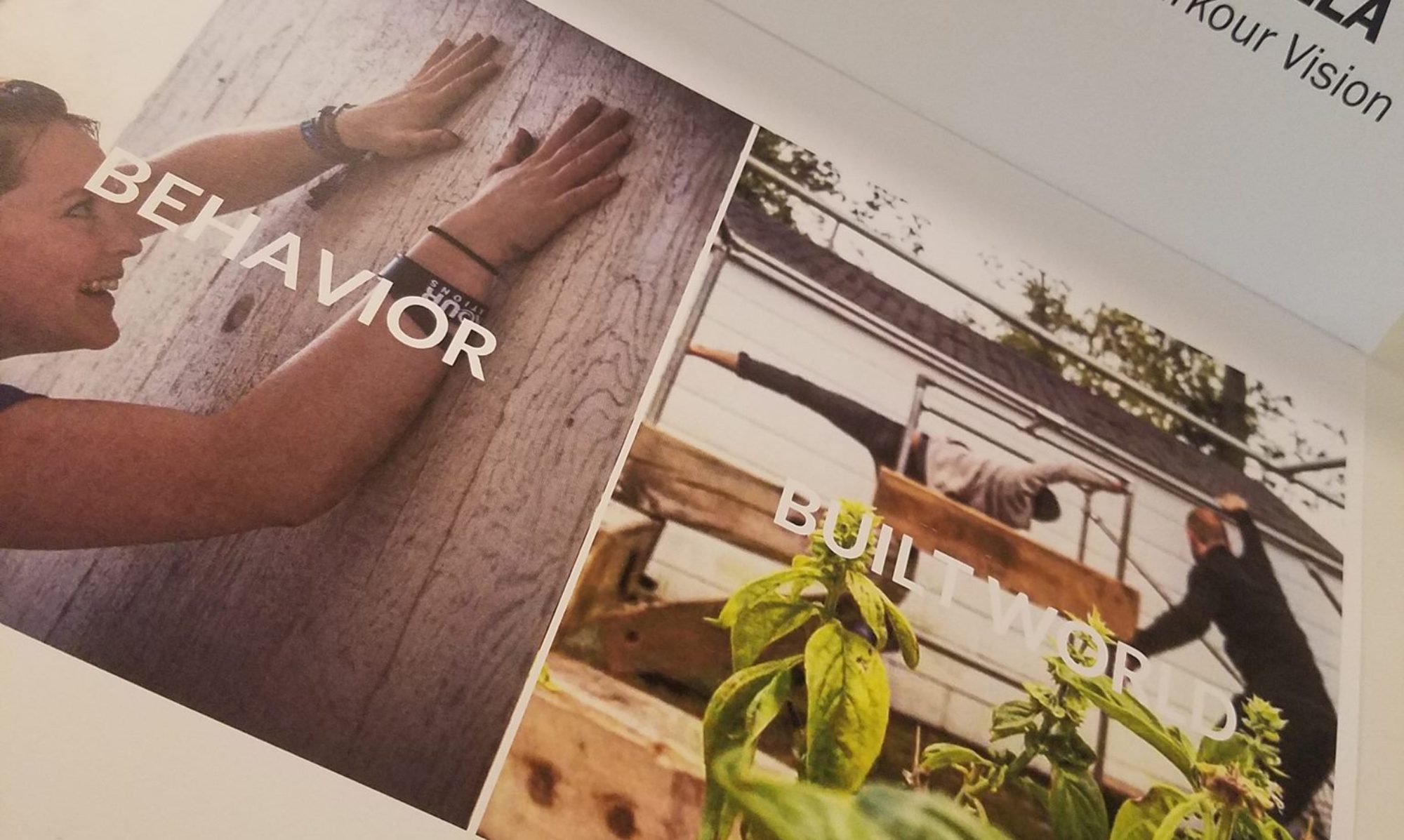Late Updated; 7/29/2020
The Public Parkour Park Roadmap is a free guide and series of articles to support individuals and communities in their efforts to build inter-generational play-spaces and parkour parks in their neighborhoods.
Over the last 20 years parkour, movnat, and other forms of alternative play-based movement practices have dramatically risen in interest and participation, drawing in not only children, but teens, adults, and seniors. However, in that same time there hasn’t been a notable increase in public play spaces for these older populations.
Parkour Parks, natural playscapes, and alternative play spaces can add immense value to a community — especially when designed to ensure inter-generational all-ability participation. Providing free access to spaces and tools that support physical and mental well being supports the growth of a whole and healthy society.
This guide is here to serve as a jumping off point, providing insight into the various stages of grassroots park development–starting with advocacy within your town or city through design, build, and long term community-care.
Overview of the Roadmap
As articles are released, I will update the links here.
Stage 1: Community Building & Partnership
You establish and develop the local and regional community through public or private programming. You build strategic partnerships with government agencies, community organizations, and companies, connecting them to your vision and the value of this type of project.
- What Are Parkour Parks?
- The Parkour Park Paradox: Why Spend Money On Something That Can Be Done Anywhere?
- Confirmation Bias: A Potential Case Against Parkour Parks
- The Obstacles Ahead
- Identifying The Need: The Movement Market
- Find Your People: Building Community
- Get The Word Out! Working With Local Press
- Strategic Partnerships & Volunteerism
- Introduction to Advocacy
- Finding Your Advocacy Team
- Running Effective Meetings
Stage 2: Public Advocacy, Education, and Normalization
You raise public awareness of the value of parkour, play, and alternative athletics in your community through civic participation, public speaking, and participation in larger community-building activities.
- Public Advocacy & Misconceptions
- Meet the Opposition
- Key Talking Points – Why Intergenerational Playspaces? Why Parkour Parks?
- Reaching Your Larger Community
- Connecting To Local Government
- Safety and Liability
- Planning A Campaign
- Putting Together Your First Presentation
- Against the word ‘Playground’.
- Temporary vs Permanent Park Builds
- Temporary Park Build Considerations
Stage 3: Space and Funding
You identify potential sites and site partners, draw up a proposed budget, and research funding sources.
- What Can You Build?
- North American Parkour Park Overview
- Parkour Park Budget Considerations
- How To Write A Successful Fundraising Appeal
- Funding Sources: Private Funding (Individual & Corporate)
- Funding Sources: Government and Foundation Grants
- What is Fiscal Sponsorship and How Do I Find A Sponsor?
- Concept Designs for Fundraising
- Context is Key
- Site Evaluation
- Organizations that provide funding for Public Space projects
Stage 4: Design & Construction
You hire an architecture, engineering, or design consulting firm to collaborate with your community leaders to create a vision. You work with your partners, site owners, and contractors to build.
- Precedence – And why you need it
- Essential Parkour Park Characteristics
- Essential Playground Characteristics
- Choosing Materials
- Is it a Park or a Playground or a Public Space?
- Why You Should Hire A Professional
- Choosing a Design Professional
- Considering Accessibility
Stage 5: Long Term Community Caretaking
You commit to and create ways to ensure the long term use and health of the park. A park that is well used and loved will continue to receive caretaking and maintenance.
- Why Multi-Community Investment is Critical to Success
- Connecting the Community to your Park
- Activating the Park through Programming Partners
- Sustaining Community Involvement
- Leave No Trace Together
- Organizing Community Events 101
Project Footnotes
Schedule
This project went live February 2020 and is on track for 1 article a month.
Geographic Bias
This guide is written from a North American perspective on risks, funding, and community behaviors. However many of these articles will be useful for understanding project processes regardless of location.
Attribution
This guide was inspired by the public skateboard park development guide, which I highly recommend since skateboarders and parkour practitioners face similar issues.
Living Project
This is a living project that will be modified, updated, and expanded when appropriate.
Use Professionals
This is an experiential guide, not a prescriptive set of rules. Always consult with legal and design professionals familiar with your local code, permitting, site, and funding requirements and restrictions. Every town, city, state, and country is different.
About Me
I am a non-profit director, partnership manager, and designer with 10 years experience leading strategic planning for community organizations, consulting on parkour design-built projects, managing major cross-sector partnerships, and facilitating professional development in the parkour community. I have traveled extensively and studied public spaces and playgrounds across the world, oversaw 50+ temporary playground art installations, and continue providing smaller communities with individualized support advocating for the creation and preservation of parkour environments.
I also hold a professional degree in Architecture from Syracuse University

U r awesome!!! Thx for using ur knowledge and experience for so much good and sharing this with us all!! Really appreciate u!!! Keep up the amazing work!